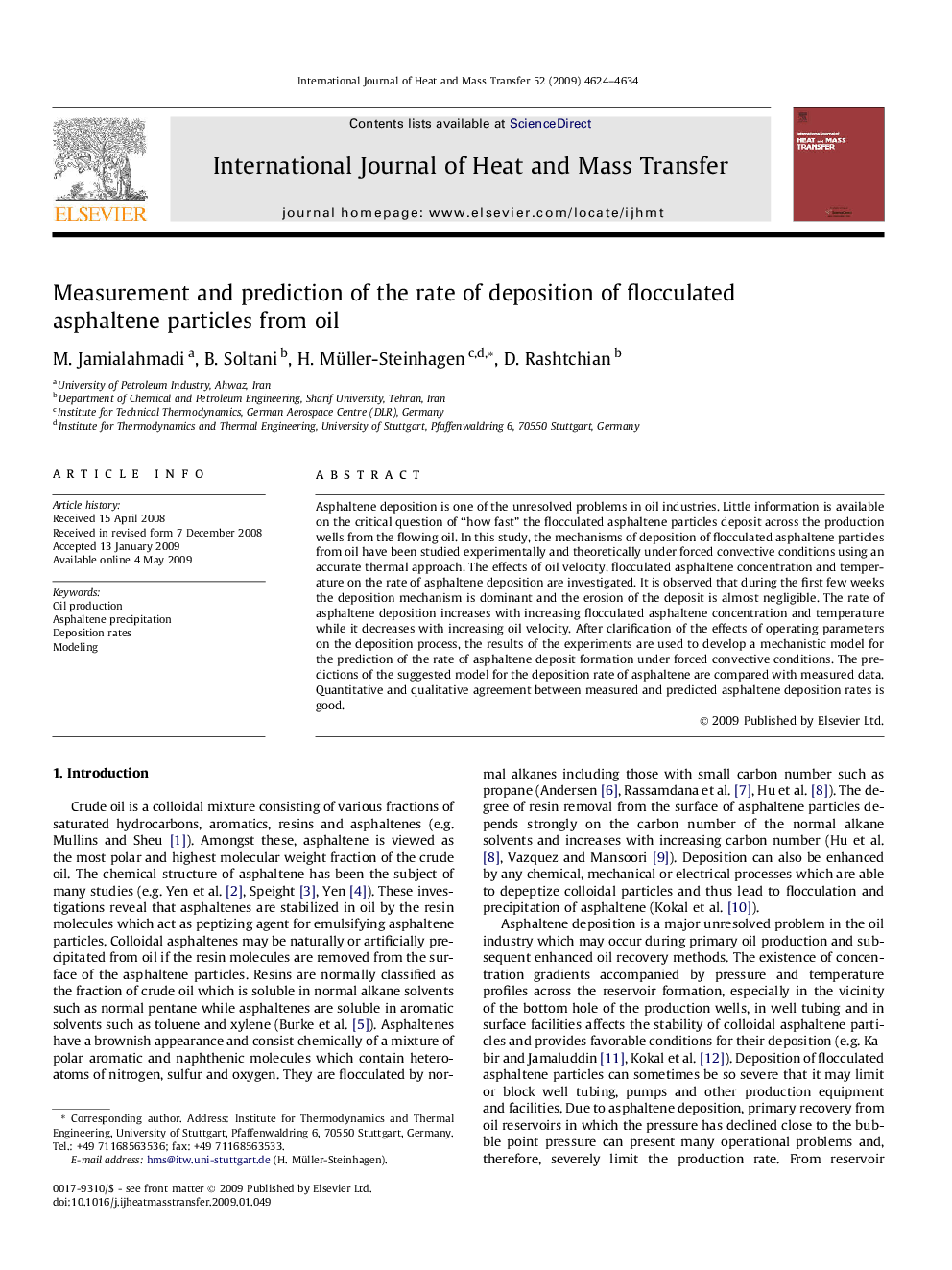| Article ID | Journal | Published Year | Pages | File Type |
|---|---|---|---|---|
| 661804 | International Journal of Heat and Mass Transfer | 2009 | 11 Pages |
Abstract
Asphaltene deposition is one of the unresolved problems in oil industries. Little information is available on the critical question of “how fast” the flocculated asphaltene particles deposit across the production wells from the flowing oil. In this study, the mechanisms of deposition of flocculated asphaltene particles from oil have been studied experimentally and theoretically under forced convective conditions using an accurate thermal approach. The effects of oil velocity, flocculated asphaltene concentration and temperature on the rate of asphaltene deposition are investigated. It is observed that during the first few weeks the deposition mechanism is dominant and the erosion of the deposit is almost negligible. The rate of asphaltene deposition increases with increasing flocculated asphaltene concentration and temperature while it decreases with increasing oil velocity. After clarification of the effects of operating parameters on the deposition process, the results of the experiments are used to develop a mechanistic model for the prediction of the rate of asphaltene deposit formation under forced convective conditions. The predictions of the suggested model for the deposition rate of asphaltene are compared with measured data. Quantitative and qualitative agreement between measured and predicted asphaltene deposition rates is good.
Related Topics
Physical Sciences and Engineering
Chemical Engineering
Fluid Flow and Transfer Processes
Authors
M. Jamialahmadi, B. Soltani, H. Müller-Steinhagen, D. Rashtchian,
